The Miniature Bull Terrier is a British breed of dog that originates from the standard bull terrier and differs from them in a more compact build.
The Mini Bull Terrier is a groovy gambling addict and fidget whose willfulness cannot be suppressed. Good-natured to humans and tough on any small animal, this egg-headed energizer has remarkable intelligence. But the mini bull prefers to use its high mental abilities exclusively for personal purposes. In studies, the dog is more likely to pretend to be a charming “misunderstanding” or turn on the obstinate leader mode, than agree to follow strict rules. Yes, the mini bull is trainable and manageable, but he is not a fan of impeccable execution of commands and always prefers sports exercises to classes, and better – a game.
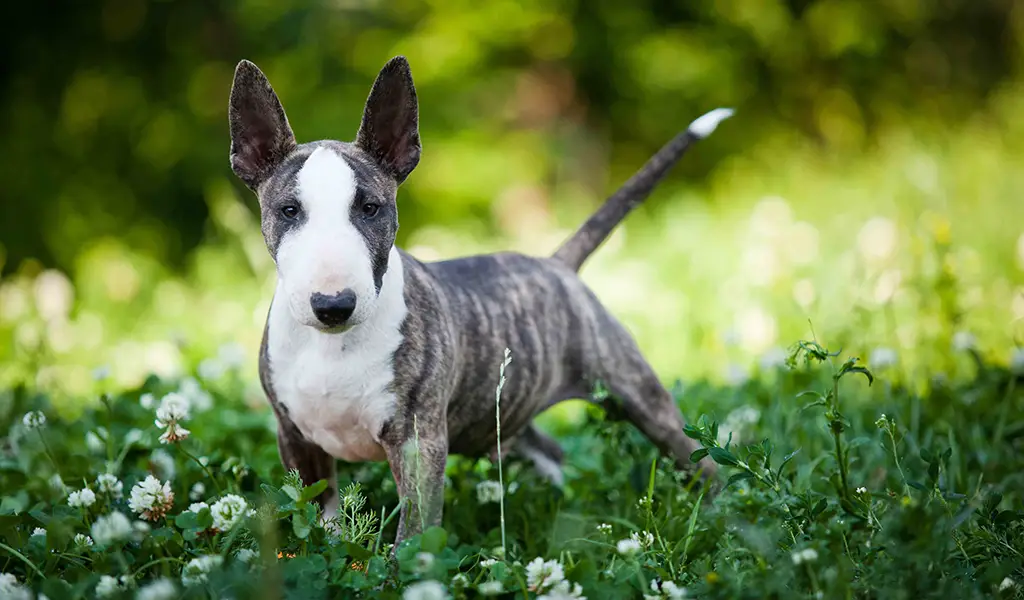
Miniature and standard bull terriers have common ancestors and themselves remain closest relatives. Basically, the breed was bred by the selection method, since in the litters of standard bull terriers, puppies were always born that differed from their brothers in more modest dimensions. At first, undersized animals were regarded as plembrak, until British breeders came up with the idea of forming an independent breed out of them.
In 1914, the tiny dogs, dubbed Toy Bull Terriers, were first shown at a London show. True, further breeding work reached a dead end: enthusiasts who began to breed animals were embarrassed by the fact that dwarf individuals gave defective offspring, and even with a bunch of genetic ailments. After working on the mistakes, the breeders decided not to get carried away with externalization of characteristics and brought out slightly larger dogs, inferior in size to standard bull terriers, but surpassing toy dogs in size. Representatives of this species were called miniature bull terriers.
In 1938, the Mini-Bull Terrier Club began its work in the UK, and just a year later the breed received recognition from the English Kennel Club. It is worth noting the fact that the dogs bred in this time period were standardized not by weight, as was done earlier, but by height. In America, the first “fan club” of the breed was opened in 1966, while registration in the AKC of miniature relatives of standard bull terriers began only in 1991.
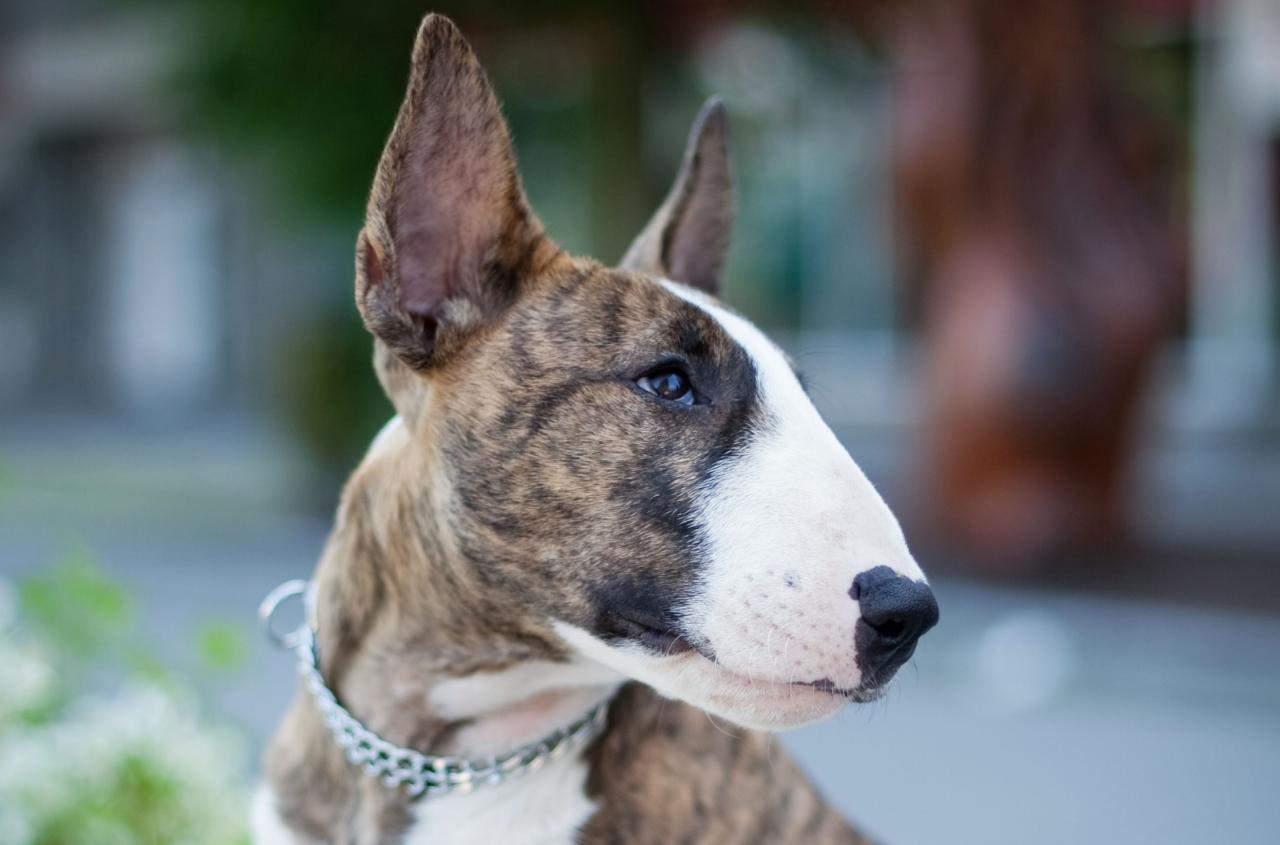
Externally, the Miniature Bull Terrier is a smaller copy of the representatives of the standard breed line. Muscular, with a pronounced bone power and egg-shaped heads, Miniature Bull Terriers are the type of super-charismatic pets to which the attention of others will always be riveted. The lower limit of growth for the mini-bull terrier is 35.5 cm. In this case, the dog may be slightly higher than the specified bar, but in no case lower. Weight restrictions do not apply in the case of this breed, but the dog must look harmonious. Fat, as well as overly lean individuals, will not make an exhibition career.
The deep, evenly filled head of the Miniature Bull Terrier is distinguished by its elongated profile and ovoid shape. The top of the skull is flattened, the surface of the muzzle is without depressions and excessively embossed areas.
The nasal bridge is bent downward at the tip. The nostrils are normally open, the lobe is evenly colored in black.
The lower jaw looks especially deep and prominent. Strong teeth are aligned in rows, and the teeth of the upper jaw go over the lower ones, forming a full scissor-shaped bow (bite).
The Miniature Bull Terrier has thin and neat ears that are close together. The earflap is in an upright position with the tips of the ears pointing straight up.
The eyes of miniature bull terriers are characterized by a triangular shape, due to which they look very narrow and small. The iris is dark brown, often close to jet black. An important ratio: the distance from the eyes to the occiput should be less than from the nose to the eyes.
The beautifully arched and long neck of the Miniature Bull Terrier is covered with dense muscles. There are no folds. The base is noticeably thicker than the upper part of the neck, but the transition between them is smooth.
All representatives of the breed have compact bodies with strongly curved ribs. The gap between the withers and the chest is very deep. The back is short, arched in the lumbar region, and flat behind the withers. The lower abdomen forms a smooth curved line, maximally matched in the groin area.
Thoroughbred Miniature Bull Terrier stands confidently on strong, muscular legs, which are typically parallel set. The length of the limbs and the depth of the chest have the same meaning (for adults only). The non-overloaded oblique shoulder blades fit closely to the sides, forming right angles with the shoulders of the dog. The forearms are formed by strong, round bones, the pasterns are fixed in an upright position.
The hind legs of the Miniature Bull Terrier are impressive thighs, well-defined knee articulations, and strong lower legs. The hock joint is normally angulated, the metatarsus is shortened but strong. The paws of the animal are small, rounded, toes with a distinct bend. Miniature Bull Terrier moves flexibly, without stiffness. When trotting, all four legs move in sync; when accelerating, the legs are placed closer to the center.
The short tail of the Miniature Bull Terrier is set low. The tip of the tail is thin, the base is thick.
Short, moderately coarse hair has a pleasant shine. The undercoat of the breed appears according to the seasons, more precisely, closer to winter.
Miniature Bull Terrier can be either completely white or colored. Individuals of solid white color may have specks on the head and pigmented skin. Colored bull terriers are black and brindle, fawn, red, and tricolor. Prohibited color options: speckled on a white background, brown liver, blue.
The list of defects in the appearance of the breed is the same as that of standard bull terriers. Individuals with light eyes, speckled lobes, loosely hanging and folded skin, twisted joints, long hair, and non-standard colors cannot apply for high show marks. Serious conformational defects also include cryptorchidism, depigmented skin of the nose, deafness, and spots on the body of white dogs.
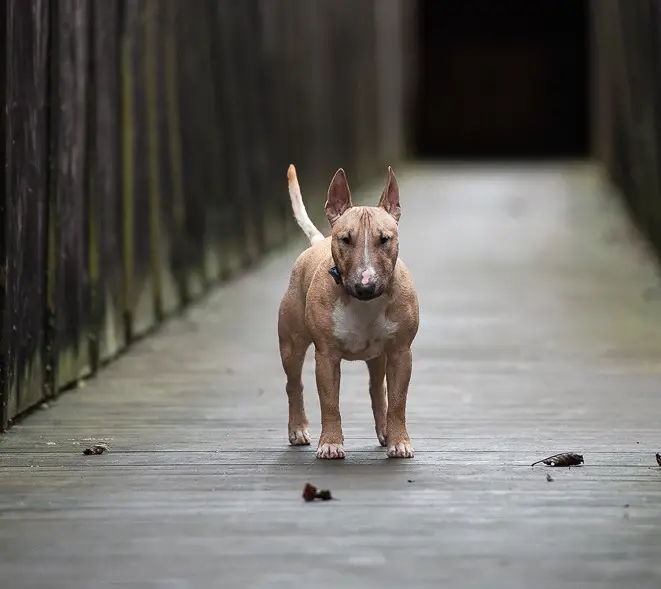
In Miniature Bull Terrier, there is practically nothing left of the bloodthirsty ancestors, which were bred for dog fights and rat baiting. Today’s representatives of the breed are positive Zimmers who adore outdoor games, running around, and a variety of pranks. Of course, they are not always goodies and are not averse to being stubborn to test the owner’s endurance for steadfastness, but aggression is not characteristic of the breed.
Mini Bull Terriers are completely unsuitable for the role of apartment watchmen. The maximum that a dog can give out when a stranger approach is warning barking. However, this action also occurs only when the pet is rudely provoked. The mini bull welcomes benevolent strangers on the doorstep, trying to sycophantly lick the hand. But about representatives of the fauna, the genes of brutal ancestors are still making themselves felt. For this reason, most dog management guides strongly advise against letting the mini-bull terrier off the leash on walks – the four-legged outrageous dog will rush off after the first cat, pretending that he does not hear your shouts at all.
Do not keep domesticated rodents and a dog on the same territory. In a permanent confrontation, someone alone will survive, and this someone will definitely not be a hamster. To whom mini-bull terriers are capable of making concessions is children. Firstly, because in their hearts they consider them more stupid than themselves, and secondly because it is the kids who can satisfy the dog’s need for play. The most terrible test for the breed is loneliness. Minibus, in principle, is not adapted to while away the hours while waiting for the owner, so for any loner with an irregular work schedule, the dog will quickly turn into a problem.
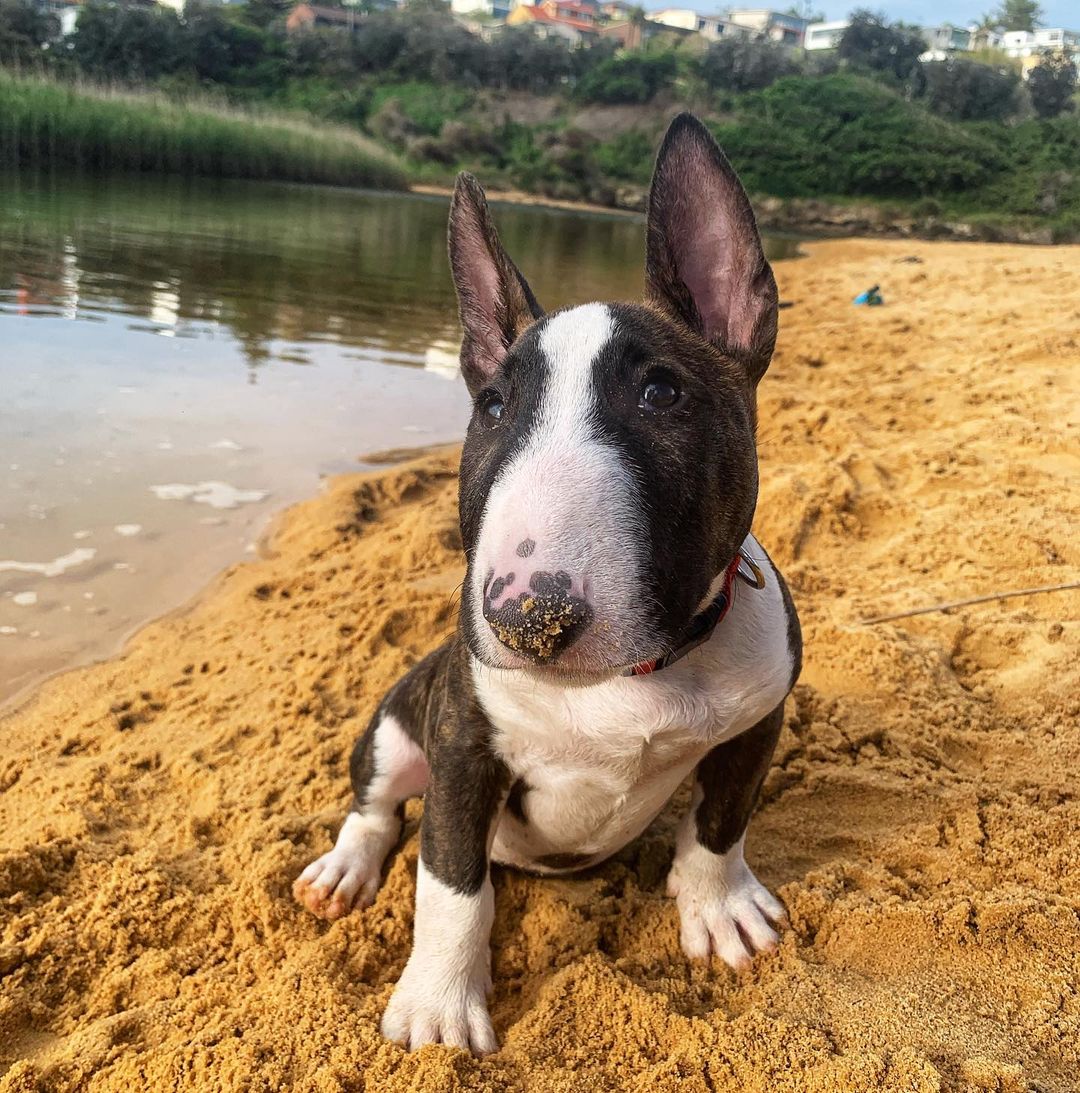
Cynologists classify Miniature Bull Terriers as highly intelligent, but difficult to train breeds. As a result, it is better to lower the bar of requirements for “egg-headed meteors” right away. Consider the fact that all representatives of this family are pronounced dominants, who do not tolerate when they are rigidly put in place. In this regard, it will be necessary to maintain a balance of relationships, namely: to show the dog that the leader in the house is still the owner, but at the same time to avoid authoritarianism in communication.
It is easy to motivate the minibus to heroic deeds with praise and tasty bonuses, so for each completed task, the pet needs to be positively stimulated. It is also not worth relying too much on the high intelligence of the breed, therefore, in the process of learning the commands, do not be lazy to help the dog. For example, when giving the order “Sit!”, Lightly press down on the animal’s back with your hand, forcing it to fall on its paws.
It is better to present new techniques entertainingly: mini-bull terriers are still gambling addicts. But expecting the perfect execution of commands from the representatives of the breed is a pointless exercise. Miniature bull terriers did not get perfectionism of service dogs, so accept the fact that your requirements will not be fulfilled immediately and not quite as you would like. It is advisable to require impeccable adherence to the rules only in an everyday environment when the comfortable life of others depends on the behavior of the pet.
As for special training programs, it will not be possible to “jump” above the UGS course with a miniature bull terrier. But with this friend, you can practise in sports disciplines. Best of all, the breed is given jogging for the owner’s bike, agility, pitch, and go. But weight-pulling, in which standard bull terriers are often involved, will not work in the case of their miniature relatives.
Ideally, the head of the family should be involved in dog training. It is better not to try to involve children in this business: the mini bull, of course, does not mind fooling around with them, but this does not prevent him from considering the children a cut below him. No physical punishment should be applied to even a dog that has pretty much shaken his nerves. If the dog is too loose, it is easy to restrain him with a stern look, taking away his favorite toy or depriving him of a delicacy that the pet was counting on. Just act in hot pursuit: it is useless to punish the mini bull for the wallpaper torn last week. The dog remembers the faults just committed and has managed to forget about yesterday’s, so it will take your claims for an unreasonable infringement of its rights.
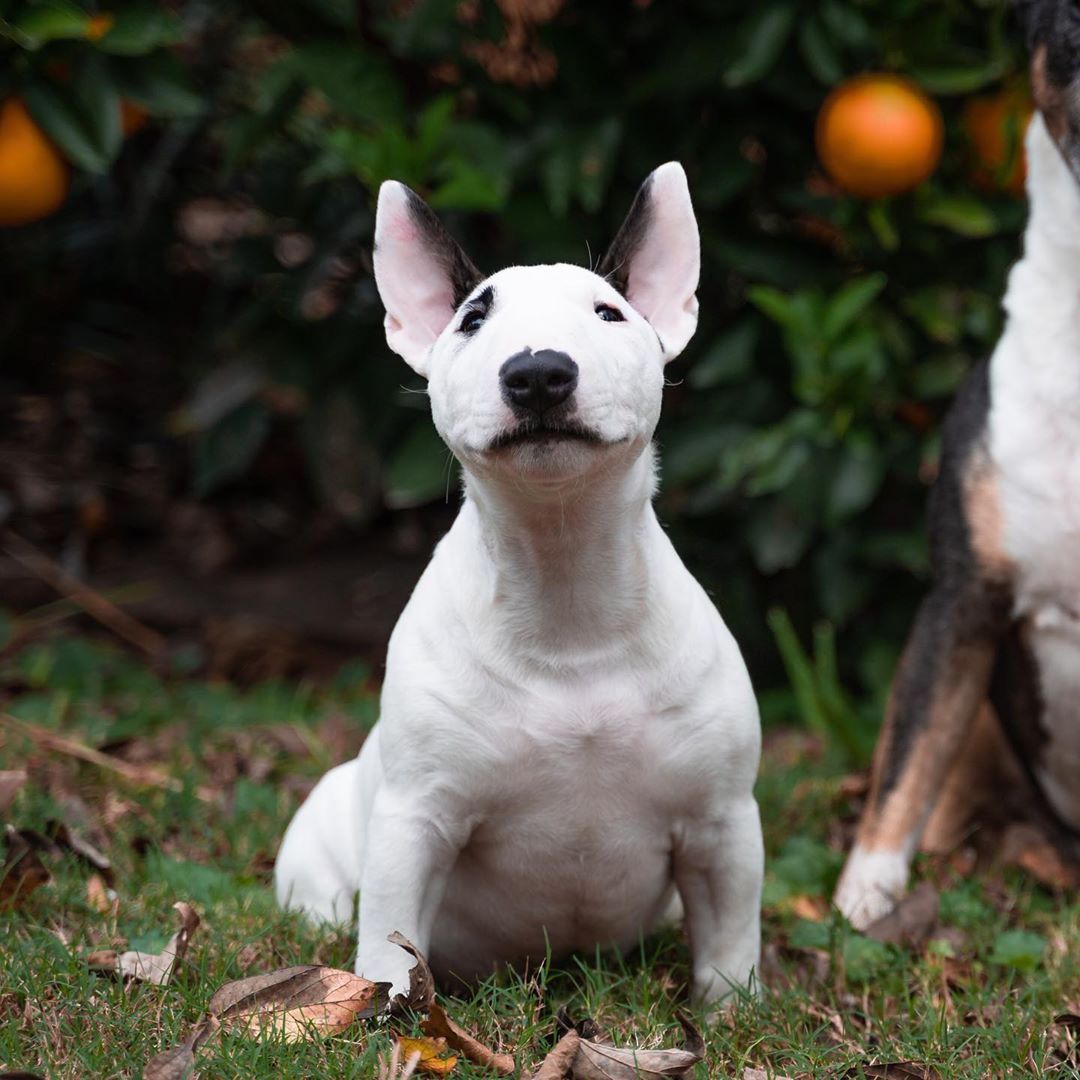
The Miniature Bull Terrier is an ideal apartment dweller, able to live happily even in limited space. It is important to understand that the breed is not decorative. For the miniature bull terrier not to smash the home to shreds, you need to walk with it for a long and productive time. It is ideal to combine walks with rewarding activities such as exercise. During the season, you can take a mini bull with you for a picnic or hunting – dogs love to chase games.
If sports and chasing trophies for some reason are not suitable, you will have to think about how to unload the animal for a walk. The most popular options are: harnesses with weights, runs on loose sand, and uphill. Do not forget about toys: with them, the miniature bull terrier takes his soul away at home, which helps him refrain from destructive games.
Important: playing sports, running with weights and other energy-consuming entertainment can be practiced no earlier than the puppy turns 8 months old.
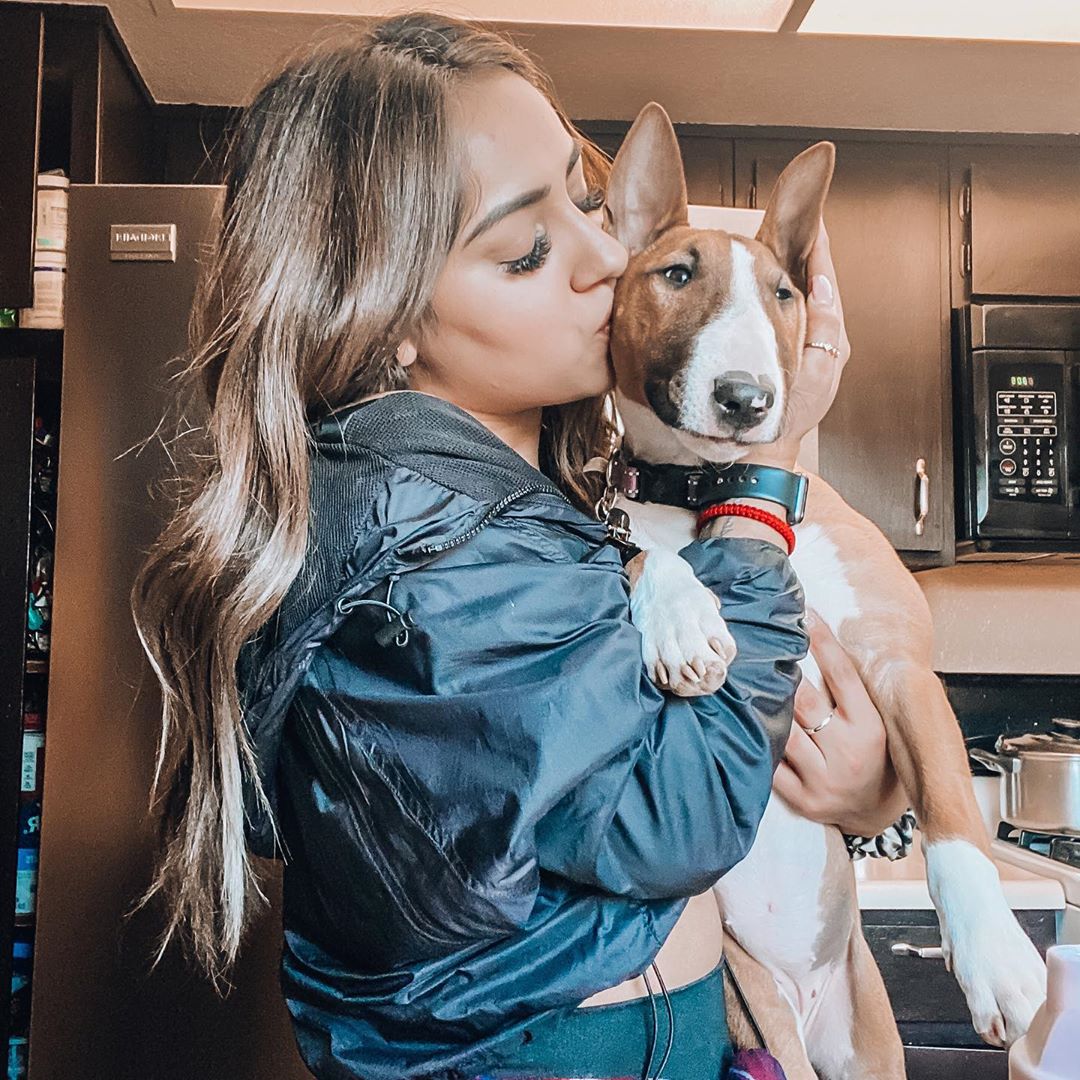
If you want to save money on groomer services and grooming products, the mini bull is your dog. The smooth short dog of the breed has a dust-repellent property, and the scanty undercoat that grows towards winter never forms mats. You also don’t have to run after the animal with a comb: to maintain a neat appearance, it is enough to collect dead hairs from the dog’s body once or twice a week with a rubber glove or brush. However, the smooth coat has its drawbacks. For example, such a dog very poorly protects the body of the minibus from low temperatures, therefore, for walking on frosty days, you will have to get warmed overalls.
Short hair also does not protect from insect bites, which can provoke allergies. To prevent this from happening, use repellents, as well as protective blankets when traveling with a dog into nature. Mini Bull Terriers are supposed to have their nails trimmed once a month. Be sure to monitor the health of your pet’s eyes – remove the lumps of mucus formed in the corners of the eyelids with a clean cloth, which can be additionally moistened with a decoction of chamomile. Use hygiene drops or lotions to clean your ears weekly.
The basis of the natural diet of mini-bull terriers is made up of lean meats (beef, rabbit, chicken), raw tripe, liver, low-fat dairy products, and sea fish, cut to a fillet state. For safety reasons, the meat must first be frozen or doused with boiling water – this will help kill the eggs of worms and microorganisms that cause digestive problems. You can give buckwheat and oatmeal porridge, but you shouldn’t get too carried away with adding cereals to the diet.
Miniature Bull Terriers benefit from any vegetables other than legumes and potatoes, as well as fresh herbs. These foods are best served raw and finely chopped. 3-4 times a month you can treat your pet to a boiled chicken egg. It is recommended to use special dog bran as a source of fiber. Before giving them to an animal, the bran must be soaked in kefir or broth and allowed to swell. Vitamin and mineral supplements with natural feeding are required. Only mini-bull terriers that eat industrial dry food do not need dietary supplements.
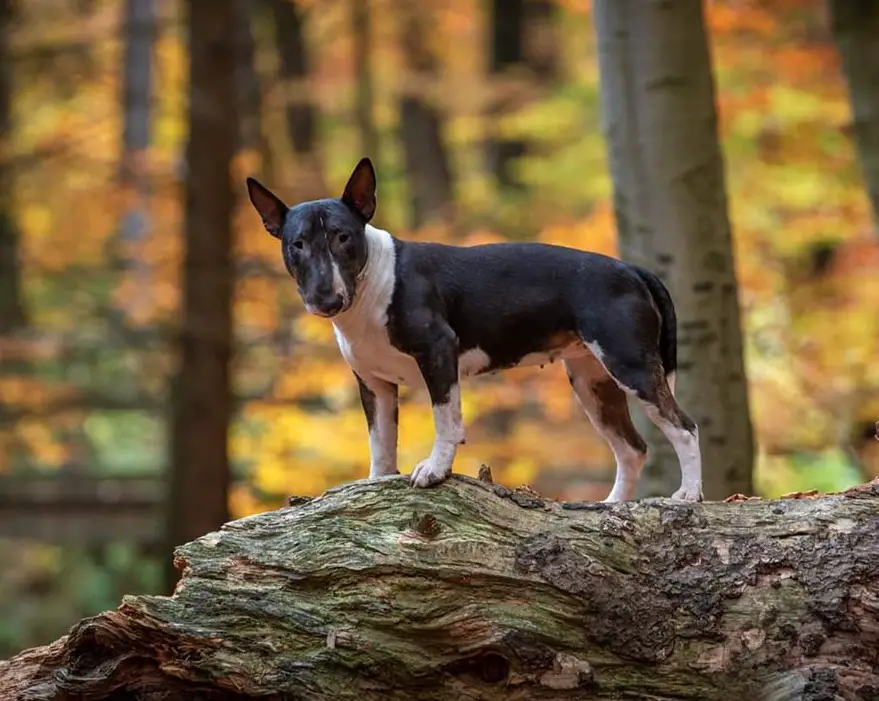
The breed is pursued by only three genetic diseases, all of which are inherited in an autosomal recessive manner, that is, when both parents are carriers of the defective gene. The most common ailment among miniature boules is the primary dislocation of the lens. The disease is treated surgically, but it is dangerous because, in advanced stages, it leads to complete blindness.
A very rare hereditary pathology is LAD, it is also a lethal acrodermatitis, which manifests itself at the age of 6 months to 2 years. A puppy with LAD, stunted, suffers from diarrhea and focal skin lesions on the face and paws. Sometimes carriers of the disease have hyperkeratosis and lightening of the coat (except white individuals). Another hereditary disease of mini-bull terriers is laryngeal paralysis. What is characteristic: pathology can manifest itself both by itself and due to mechanical damage to the throat (trauma, insect bites, tumors).
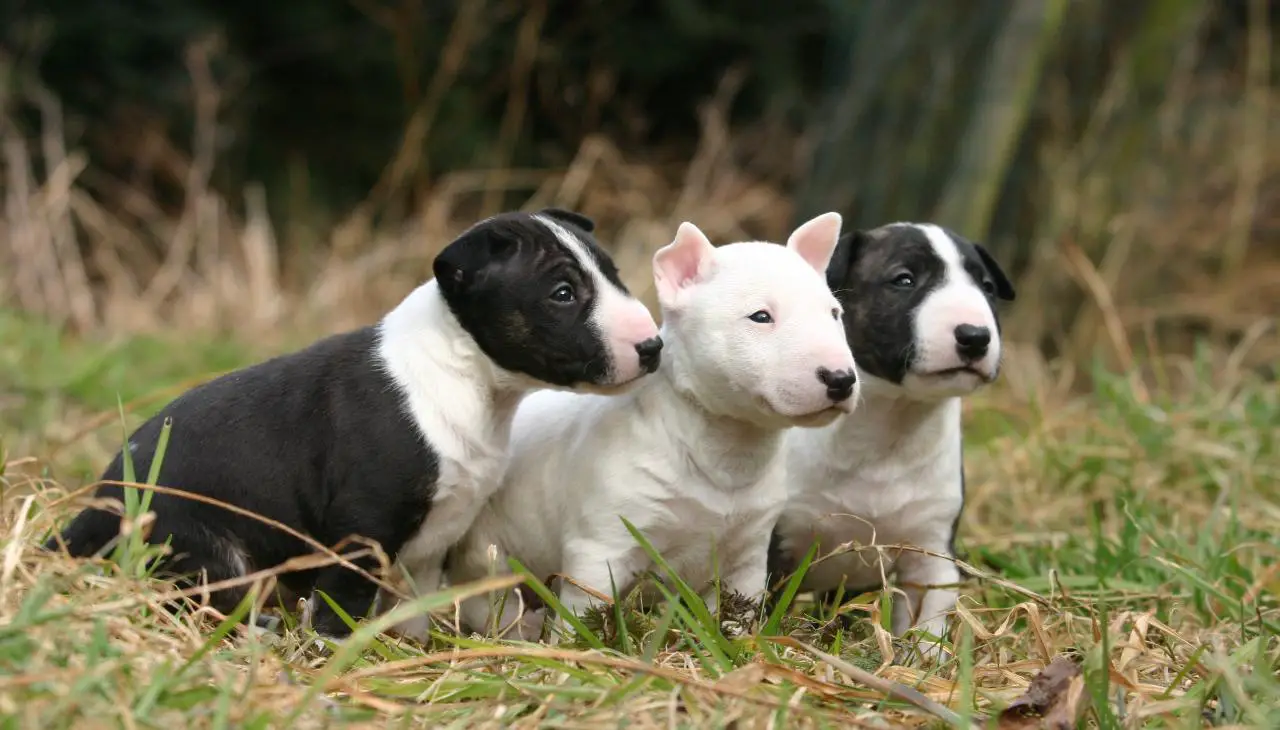
How to choose a puppy?
- Trust only breeders who have provided test results from both manufacturers for genetic diseases.
- Feel the puppy’s tail carefully: there should be no knots or wrinkles on it.
- Be sure to ask the breeder to provide a litter inspection report, carried out by a specialist in a breed club or canine organization.
- Dog handlers do not recommend taking too phlegmatic mini bulls. As they grow older, they become even slower and less trainable. Always give preference to active and curious babies.
- Don’t take the fattest puppy in the litter. Corpulent forms are not an indicator of good health.
- If you have little experience in training dogs, opt for a female puppy. Mini Bull Terrier females are always softer, more contactable, and learn faster.
- Check how many babies the female feeds. The best option is 5-7 puppies. If there is more litter, most likely there is not enough mother’s milk for mini-bull terriers, which means that the offspring will not have the strongest immunity.
- Too small litters should be treated with extreme caution. Basically, a couple of puppies are brought by young mini-bull terrier females giving birth for the first time. A small number of babies in a mature dog may be the result of intrauterine infection, as a result of which some of the puppies die, therefore it is undesirable to take an animal from such a parent.

Where in South Africa are there breeders? What could one pay for a male?